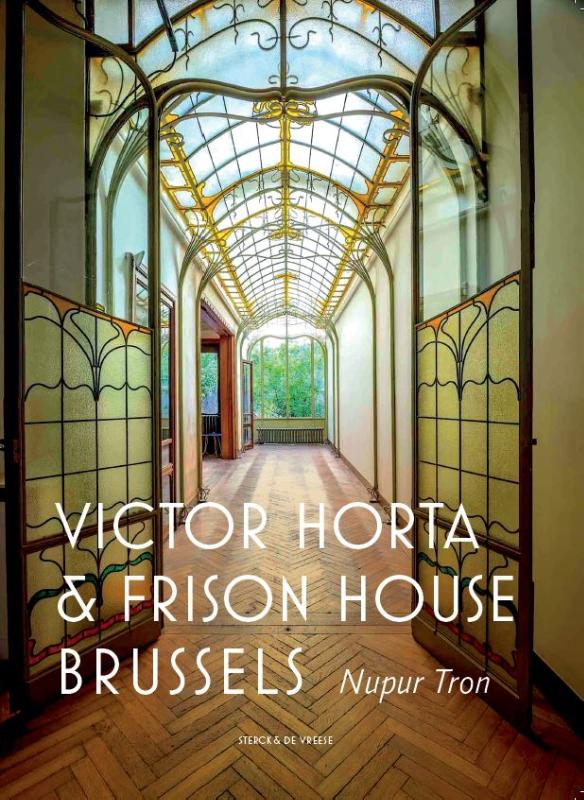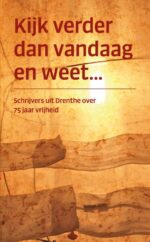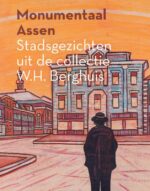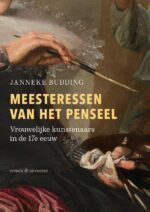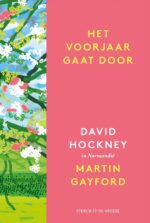Victor Horta and the Frison House in Brussels
€ 19,90
In the middle of the Lebeaustraat in Brussels, sandwiched between neo-Renaissance and neo-Gothic houses, stands an Art Nouveau jewel designed by Victor Horta: the Frison House. It was
commissioned by Maurice Frison, a lawyer and friend of the architect, and was built in 1894-1895. Horta designed not only the house, but also all its furniture and decoration, right down to the smallest detail: from door handles to marble fireplaces, from mosaic floors to elegant banisters, from wall lamps to the gratings for the cellar openings. The absolute eyecatcher is the winter garden, whose elegant design allows soft yellow light to flow subtly into its perfectly proportioned space.
Nupur Tron is the author of this book and owner of the house. In recent years, she has breathed new life back into Horta’s masterpiece. She pieced together bits of the old chandeliers she found in one of the cellars. She had items of furniture designed by Horta lovingly restored. With great passion, she continues to search for the funds that will allow her to restore the entire house to its former glory, one step at a time.
Horta and the Frison House in Brussels is an ode to the architect and his creation.
Nupur Tron is from India. She studied Design, Marketing & Merchandising and Fine Arts at the Fashion Institute of Technology in New York. She designs jewellery, in which the different styles of east and west meet in harmony.
Gerelateerde boeken
-
Kijk verder dan vandaag en weet…
€ 12,95Deze bundel bevat gedichten en korte verhalen over oorlog, vervolging, dood, vrijheid. Deze thema’s komen veelvuldig terug in de literatuur in Drenthe. De meeste bijdragen zijn van schrijvers met ‘oorlogservaringen’ uit de tweede hand. Een enkeling weet uit eigen ondervinding verschrikkingen te beschrijven. Ieder laat zien dat we, of we willen of niet, het collectieve geheugen van oorlog, bevrijding en leven in vrijheid met ons meedragen.
‘Kijk verder dan vandaag en weet…’ is één van de vele stenen als het gaat om 75 jaar vrijheid. Deze meertalige bundel bouwt mee aan de herinnering en roept tegelijkertijd op om de toekomst met vertrouwen tegemoet te zien.
Meer dan twintig dichters en schrijvers uit Drenthe blikken naar het verleden om vooruit te kunnen kijken. Ze laten ervaringen en gevoelens zien over onderdrukking, bevrijding en vrijheid.
In deze bundel staan bijdragen van Aagje Blink, Jannie Boerema, Rob Boudestein, Annije Maria Brans, Delia Bremer, Cécile Evers, Gijsje Gramsma, Willem Haandrikman, Ben Hoogland, Mischa van Huijstee, Jelte van der Kooi, Marga Kool, Klaas Koops, Sacha Landkroon, Nicolette Leenstra, Gerard Nijenhuis, Gezienus Omvlee, Ton Peters, Ruth Post, Suze Sanders, Tonko Ufkes, Peter Veen, Jan Veenstra, John Vorenkamp, Atze van der Wijk en Ria Westerhuis.
-
Monumentaal Assen
€ 24,95Waarom schilderen kunstenaars alleen bekende steden? Die vraag stelde de Amsterdamse bankier Wim Berghuis (1930-2014) zichzelf eind jaren tachtig. Voor de in Assen geboren Berghuis betekende dat het begin van een zoektocht naar kunstenaars die zijn geliefde stad Assen wilden vastleggen. Het leidde tot een verzameling Asser stadsgezichten van een groot aantal kunstenaars die hij opdracht gaf om de stad op het doek te vereeuwigen. De inspanningen van Berghuis gingen niet onopgemerkt voorbij. Zijn werken werden in de loop der jaren meerdere malen tentoongesteld, niet alleen in het Drents Museum, maar ook in Berlijn en Bad Bentheim.
Monumentaal Assen – Stadsgezichten uit de Collectie W.H. Berghuis is het langverwachte boek met daarin de complete Collectie dr. W.H. Berghuis. 112 werken van maar liefst 70 verschillende kunstenaars worden afgebeeld en beschreven. Annemiek Rens, Hoofdconservator van het Drents Museum, gaat in op het belang van de collectie en de bijzondere kunstwerken. Martin Hiemink neemt de lezer mee in het leven van Wim Berghuis en de historische verhalen achter de gebouwen en plaatsen die de kunstenaars vastlegden. In Monumentaal Assen – Stadsgezichten uit de Collectie dr. W.H. Berghuis wordt Assen op een verrassende wijze in beeld gebracht en laten kunstenaars de lezer steeds opnieuw kennis maken met de stad.
-
-
